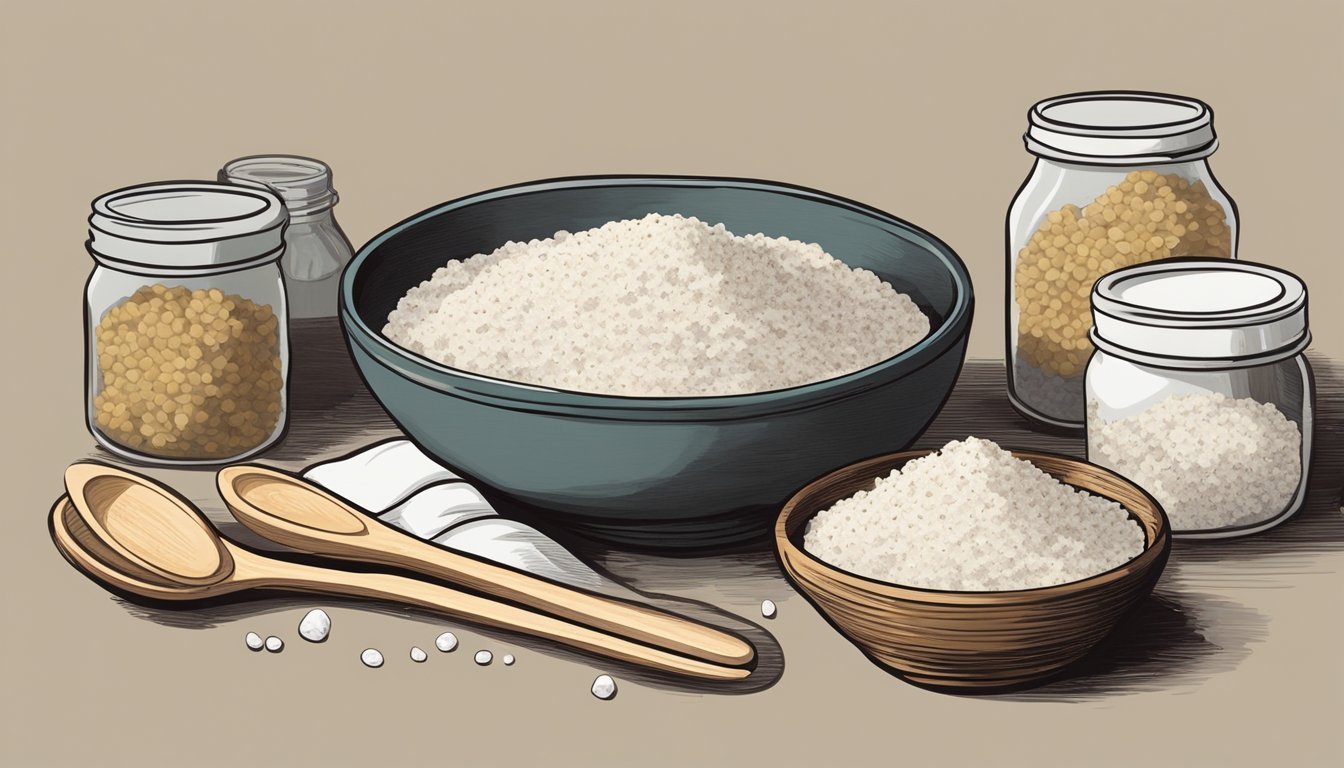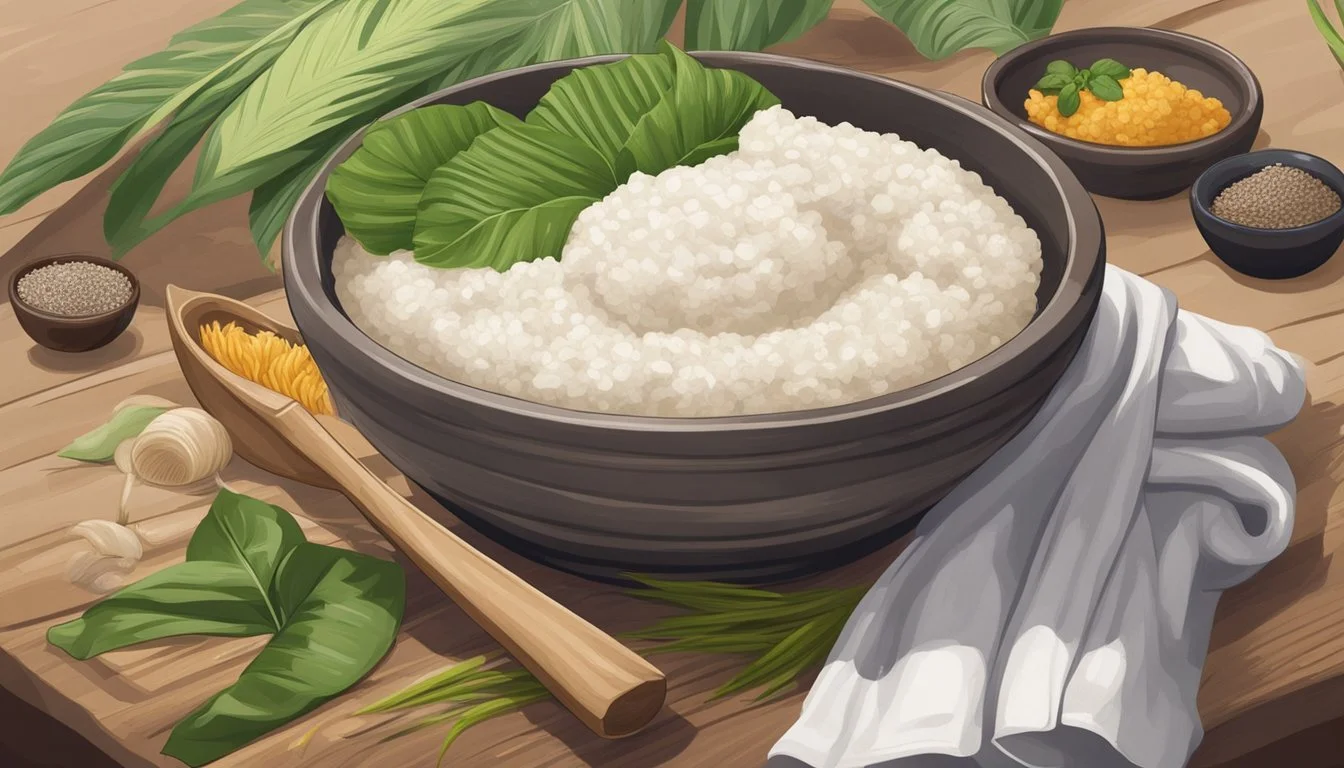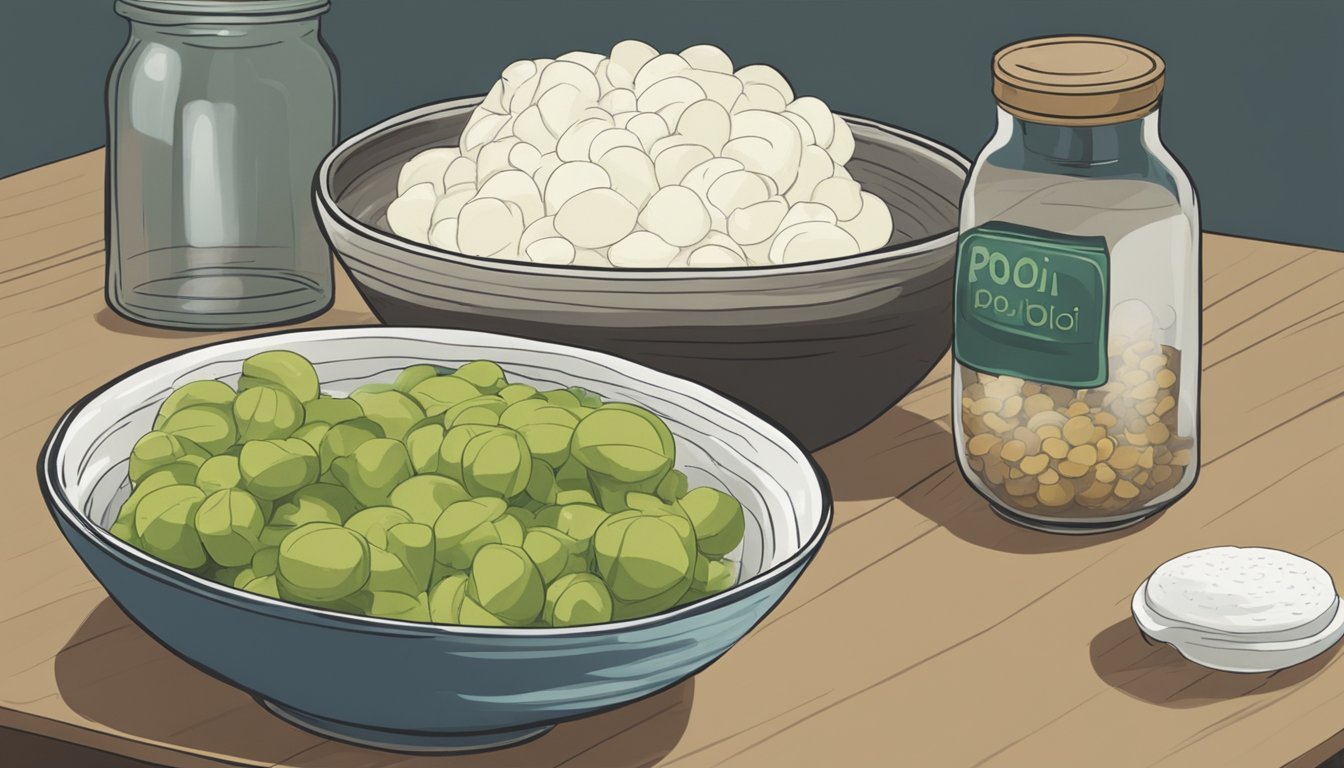How to Ferment Poi
Mastering Traditional Hawaiian Techniques
Fermenting poi is a traditional Hawaiian method of preserving the taro root, a starchy vegetable staple of the islands. Poi, the end product, is a thick, smooth paste that is both a versatile ingredient and a vital cultural food. To achieve fermentation, freshly made poi is allowed to sit at room temperature, which naturally encourages the growth of lactic acid bacteria. This process not only extends the shelf life of the poi but also enhances its flavor profile, providing a tangy taste that is often described as sour.
The fermentation of poi is not only rooted in the need for preservation but also in the embodiment of Hawaiian culinary tradition. As the poi ferments, its nutritional value remains intact, offering a low-fat, gluten-free food high in phosphorous and vitamin B. This process doesn't require any sophisticated technology or additives, hinging solely on the natural interaction between the poi and the environment. Over a span of a few days, the poi develops a distinct sourness and reaches a point where it can be stored indefinitely without spoilage, similar to how sourdough bread is maintained.
Understanding Poi
Poi is a traditional Hawaiian dish made exclusively from the taro plant, holding great cultural value in Hawaiian and Polynesian societies. It is a fermented food rich in nutrients, playing a central role in their diets.
Taro: The Primary Ingredient
The taro root is the essential component of poi. Cultivated in waterlogged fields, taro is a starchy root vegetable known for its versatility in various culinary applications, particularly within Hawaiian and Polynesian cuisines. To produce poi, the taro root undergoes steaming before being mashed to create a smooth, sticky paste. This paste can be thinned to different consistencies according to preference.
Historical Significance
Poi is deeply embedded in Hawaiian culture, historically serving as much more than a mere food item. It symbolizes a direct link to the ancient Hawaiians' mythology where Haloa, the ancestor of the Hawaiian people, is believed to have been born from the taro plant. This relationship mandates a reciprocal bond, where descendants care for the taro, and in return, the taro provides sustenance. Throughout Polynesia, poi is not only a dietary mainstay but also a celebration of the regions' heritage and nutritional wisdom.
Basics of Fermentation
The process of fermenting poi transforms its starch into beneficial probiotics through the action of microorganisms. This enhances both the food's taste and nutritional profile, often resulting in a unique consistency and an acquired taste.
Fermentation Process
Fermentation is a metabolic process that converts carbohydrates such as starch into alcohol or acids using microorganisms—bacteria, mold, and yeast—under anaerobic conditions. When fermenting poi, these microorganisms are naturally present on the taro and initiate fermentation, breaking down the starches in the cooked taro into lactic acid. This natural preservation method not only extends the shelf life of the poi but also creates distinctive flavors and a paste-like consistency.
Stages of Fermentation:
Inoculation: The cooked taro is mixed with water and allowed to sit, introducing it to naturally occurring lactic acid bacteria.
Incubation: As the mixture rests, usually at room temperature, the bacteria metabolize the starch, producing lactic acid.
Termination: The fermentation process is halted when the desired level of sourness and thickness is achieved.
Attributes of Fermented Foods
Fermented foods, including poi, possess several attributes that contribute to their uniqueness:
Consistency: Fermented poi achieves a sticky, paste-like texture that can range from thick to thin based on the water content and fermentation duration.
Probiotics: The fermentation process enriches poi with probiotics, beneficial bacteria that support gut health and can boost the immune system.
Acquired Taste: Due to fermentation, poi develops a tangy flavor that may be an acquired taste for some, indicative of the lactic acid produced.
Nutritional Value: Fermentation can increase the bioavailability of nutrients, making the food more nutritious.
It is important for individuals interested in fermenting poi to understand these basics to ensure a safe and successful fermentation process.
Preparing Taro
In the process of fermenting poi, careful selection and proper preparation of taro roots are crucial steps. It is the quality of the taro root and the attention to its preparation that sets the foundation for excellent poi.
Selecting Quality Taro Roots
When selecting taro roots, one should look for firm, heavy roots without any signs of soft spots or blemishes. The size of the root is less important than its freshness and weight, which indicate how much water it contains. A high water content in the root is desired, as this aids in achieving a smooth consistency in the final poi product. The taro root should also have a healthy appearance, with no sprouts or excessive drying, to ensure that it is at the optimal stage for cooking and fermentation.
Cleaning and Cooking Taro
Before cooking, taro roots should be thoroughly cleaned to remove any dirt or debris. This can be done by rinsing them under running water while gently scrubbing with a clean brush to get rid of any residual soil. When cleaning, one must handle taro with care, as it can cause skin irritation for some people; using gloves may be advisable.
The next step is cooking the taro roots. There are two common methods: steaming or boiling.
Boiling: In a large pot, cover the taro roots with water and add a pinch of salt. Bring the water to a boil and then reduce the heat, simmering until the roots are tender.
Steaming: Place the taro roots in a steamer over boiling water, making sure the water does not touch the roots. Cover and steam until they can be easily pierced with a fork.
The taro plant's corms should be cooked until tender, which typically takes about 45 minutes to an hour, depending on size. Once cooked, the taro roots will be soft and have a slightly sweet taste. To prevent any post-cooking hardening, they should be used or further processed into poi while still warm.
Making Poi
Poi, a traditional Hawaiian starchy food, is made from taro root. Essential to its creation are proper cooking techniques and achieving the right texture for fermentation.
Creating the Poi Base
One begins by steaming or boiling the taro until it's fully cooked. This ensures that the starch in the taro is gelatinized, which is crucial for the desired texture of poi. Once cooked, the taro is peeled, which is often done with the back of a spoon, and cut into small, manageable pieces.
Next, the taro pieces are placed into a food processor in batches. Pureeing the taro until it forms a smooth base is a modern adaptation of the traditional method of pounding it. The food processor should be used on a low-to-medium setting initially, to break down the large pieces of taro, before moving to a high setting to achieve a smooth paste.
Achieving Desired Consistency
The consistency of poi is subjective and can vary according to personal preference. To adjust the thickness, water is added slowly. The traditional consistency is often described as "two-finger" or "three-finger," denoting how many fingers are needed to scoop it up.
Consistency: Two-finger
Description: Thick, sticks to two fingers
Water Added: Minimal
Consistency: Three-finger
Description: Slightly thinner, creamier texture
Water Added: Moderate
After achieving the preferred consistency, the poi is left to ferment at room temperature, usually for about 24 hours. The fermentation process is what gives poi its distinctive sour flavor. The length of fermentation will influence the flavor profile—longer fermentation results in a more sour poi.
Adding Flavor and Preserving
When fermenting poi, two key aspects to consider are the flavor profiles and methods to preserve the food for longer periods. Fermented poi can be tailored to individual tastes through additives, and it can be stored effectively with proper techniques.
Adjusting Taste with Additives
To adjust the flavor of poi, one may introduce certain additives:
Sugar: Adding sugar can balance the poi's naturally sour taste with a hint of sweetness.
Salt: Incorporation of sea salt not only enhances the flavor but also contributes to the fermentation process.
Coconut: Shredded coconut or coconut milk can be added for a subtle tropical flavor and additional sweetness.
Sour Flavor: For those who prefer a more tangy poi, incorporating sour taste agents like sauerkraut juice can intensify this profile.
Substances Used for Taste Adjustment
Additive: Sugar
Taste Impact: Enhances sweetness
Suggested Quantity: 1-2 teaspoons
Additive: Sea Salt
Taste Impact: Boosts overall flavor; aids fermentation
Suggested Quantity: 1-2 teaspoons
Additive: Coconut
Taste Impact: Adds tropical sweetness; enhances creaminess
Suggested Quantity: 1/4 cup
Additive: Sauerkraut Juice
Taste Impact: Introduces extra sourness
Suggested Quantity: 1 tablespoon
Extending Shelf Life
Consider the following practices to extend the shelf life of fermented poi:
Temperature: Storing poi at temperatures around 55 degrees F (but above freezing) slows down fermentation, preserving the flavor and preventing spoilage.
Salt Concentration: Higher concentrations of sea salt can discourage harmful bacteria, promoting longevity.
Sweet Potatoes: Some traditional methods include the addition of sweet potatoes to the taro mixture, providing natural sugars that can help stabilize the fermentation.
Methods for Preservation
Store poi in a cool, dark location
Ensure poi is kept in airtight containers
Regularly check for signs of spoilage
Shelf Life Extension
Factor: Temperature Control
Method Details: Keep at 55 degrees F; slow fermentation
Expected Result: Longevity; prevents over-fermentation
Factor: Salt Concentration
Method Details: Use higher amounts of sea salt
Expected Result: Inhibit harmful bacteria; prolong life
Factor: Inclusion of Stabilizing Additives
Method Details: Add sweet potatoes to the mix
Expected Result: Balances ferment; extends shelf life
Serving Poi
After the fermentation of poi, its serving is paramount in showcasing its traditional roots and versatility as a Hawaiian staple.
Traditional Serving Methods
Historically, poi is a central element in Hawaiian feasts, known as luau. It is consumed in different thicknesses, often referred to by the number of fingers it takes to eat it—ranging from the thicker "one-finger" poi to the thinner "three-finger" poi. The thickness indicates not just personal preference, but also how poi was traditionally designed to be eaten with the hands.
At a traditional luau, poi is served alongside succulent kalua pork, vibrant lomi salmon, and a host of other Hawaiian dishes. As a neutral-flavored side dish, it balances the stronger flavors of the main dishes and acts as a staple carbohydrate, akin to rice in other cultures.
Modern Pairings and Uses
In contemporary settings, Hawaiian poi continues to be a versatile food, finding its way into various modern dishes. Chefs and food enthusiasts might pair poi with non-traditional items such as:
Fried or Grilled Seafood: Enhances the taste of seafood while adding a creamy texture.
Salads or Bowls: Serve as a base or a dressing for an added nutritional punch.
Smoothies or Desserts: Used as a thickening agent while providing a healthful twist.
Poi's mellow taste also allows for it to be flavored or mixed into other foods without overpowering them. This adaptability makes it a favored ingredient in the realm of Hawaiian food innovation, propelling the traditional dish into new culinary territories.
Health Benefits
Poi, a nutritious food derived from the taro plant, offers a rich profile of vitamins, minerals, and other essential nutrients. It is known for its health benefits, particularly in the areas of nutrition and digestion.
Nutritional Profile
Poi is a low-cholesterol food that provides a significant amount of vitamins and minerals. It is also rich in carbohydrates, which serve as the body's primary source of energy. The presence of nutritious starch in poi constitutes a good source of calcium, which is essential for bone health and functionality. Additionally, poi contains a modest amount of protein, which is crucial for tissue repair and muscle growth.
Digestive Health
The natural fermentation process of poi not only extends its shelf life but also enhances its digestive health benefits. As poi ferments, it produces beneficial bacteria that contribute to a healthy gut microbiome. This fermentation process generates nutritious starches that are easier to digest, aiding in the prevention of digestive issues. Moreover, the fiber in poi helps maintain digestive regularity.
Conclusion
Poi has held a vital place in Hawaiian culture, representing more than just food—it is a link to Polynesian heritage and a symbol of the sustainability principles ingrained in Hawaiian cuisine. Those interested in traditional diets and cultural preservation continue to ferment poi as their ancestors did.
In its simplest form, poi is both nourishing and versatile. The fermentation process is key to unlocking its nutritional benefits, such as an increase in probiotics that enhance digestive health. To ferment poi correctly, enthusiasts must be diligent in maintaining the proper environment—cool and shaded—allowing the natural lactobacilli to thrive.
Traditionally, poi is enjoyed in various stages of fermentation. Preferences in flavor and sourness vary, reflecting the rich diversity within Hawaiian culture itself. Some opt for fresh, sweeter poi, while others acquire a taste for the more pungent, sour notes of longer-fermented poi.
The effort put into preparing and fermenting poi mirrors the respect for natural resources and the land, fundamental concepts in Polynesian values. As the world moves towards understanding the importance of traditional foods, poi stands as a testament to the culinary wisdom of Hawaii's indigenous communities.
Remember:
Freshness of the taro root affects the final taste
Fermentation time alters flavor profile
Temperature impacts the rate of fermentation
Cultural preferences influence the desired consistency and taste
Culinary enthusiasts and cultural practitioners alike pass down the art of poi fermentation, ensuring this staple remains at the heart of Hawaiian meals and heritage.







